Background
Mid 2021 I signed up to the 4Islands, a four-day stage race set above the cyan seas of Kvarner Bay to the north of Croatia where some days you start from onboard a ferry. However, physiotherapy hadn’t resolved a groin pain that had been nagging at me for a while and twenty-six weeks from the race, I received confirmation of an operating date to have a total hip replacement to fix the rotation of my right hip joint which was being impinged by arthritis.
In April 2022, I completed the 4Islands race, but I wouldn’t have made it to the start line if it wasn’t for five key things that made it possible for me to get from being wheeled into theatre to whooping it down rocky trails at race speed. There was the great team that helped me, hard work put in before and after surgery, getting back onto a bike and ultimately racing. But first, I had to commit to the surgery…
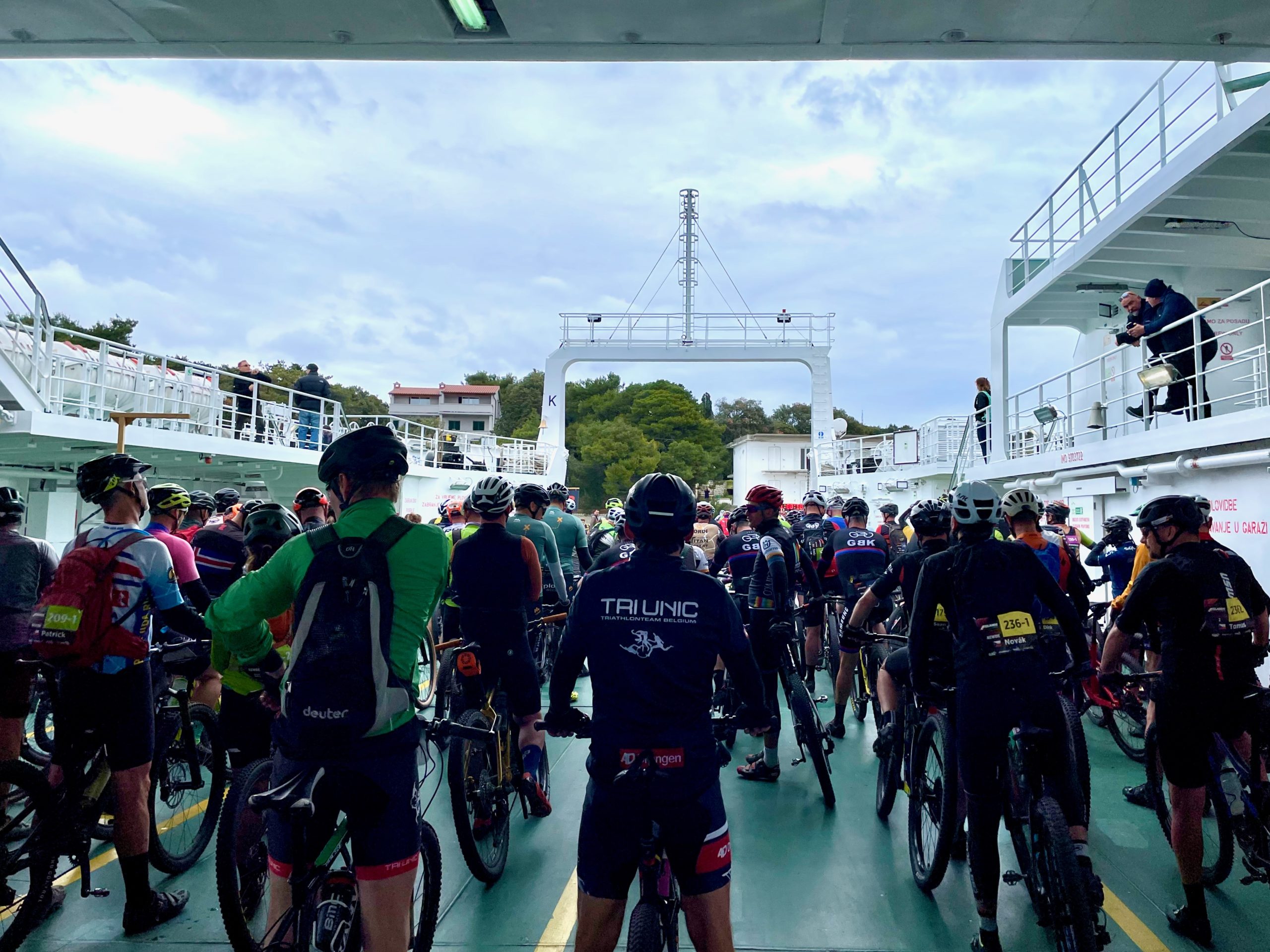
One of the great things about 4Islands is the ferry starts
Tip 1: Timing is crucial
Cyclists can be pretty rubbish at seeking help but recognising that you need an intervention is the first critical decision. My symptoms were not severe. I certainly wasn’t a bandy-legged geriatric suffering constant debilitating pain; the characteristics I naively presumed applied to people who needed hip replacements.
I was still mobile and could ride a bike, even if my right leg kicked out to one side when pedalling, so I had kidded myself that I didn’t need to see a consultant for too long. Even with NHS backlogs, joint replacement surgery is increasingly accessible and encouraged for people well before they become crippled. The goal for joint replacement recovery is to get you back better than you were before the diagnosis, and the greater your capacity pre-op, the better the prognosis.
So, Tip 1 is to seek help sooner. This will ensure that you have time available before you go under the knife to engage in “pre-hab”, which takes us to Tip 3. But, before that, some thoughts on the team of people that will be fundamental to your journey.
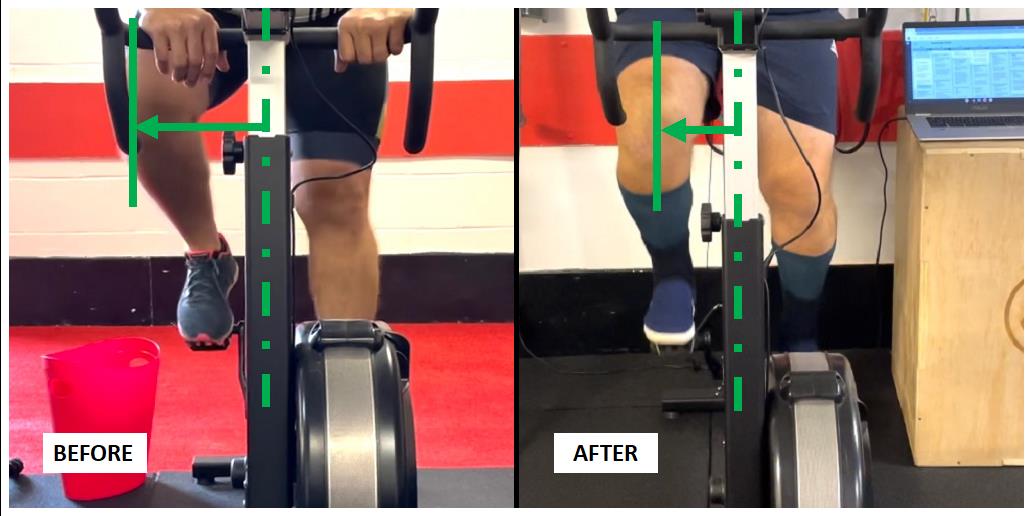
Tip 2: Success is a team game
Whether you have total or limited control over your choice of surgeon, there needs to be a conversation, so you have an opportunity to state your goals and declare what you are willing to put in to achieve success. Even common operations are bespoke events, and you want to know that the surgeon treats you as an individual.
Most joint surgeons recommend physiotherapists associated with their clinic and this ensures that your recovery accommodates specialist knowledge regarding the limitations arising from your operation. However, physio sessions are limited in number and only kick in after the surgery.
If you are looking to maximise recovery, you need to ensure you are in the best pre-operative state, which means additional workouts that don’t come with the post-operative physio package. I recommend finding a Personal Trainer you can work with before and after the operation, then have the physio and PT confer and collaborate.
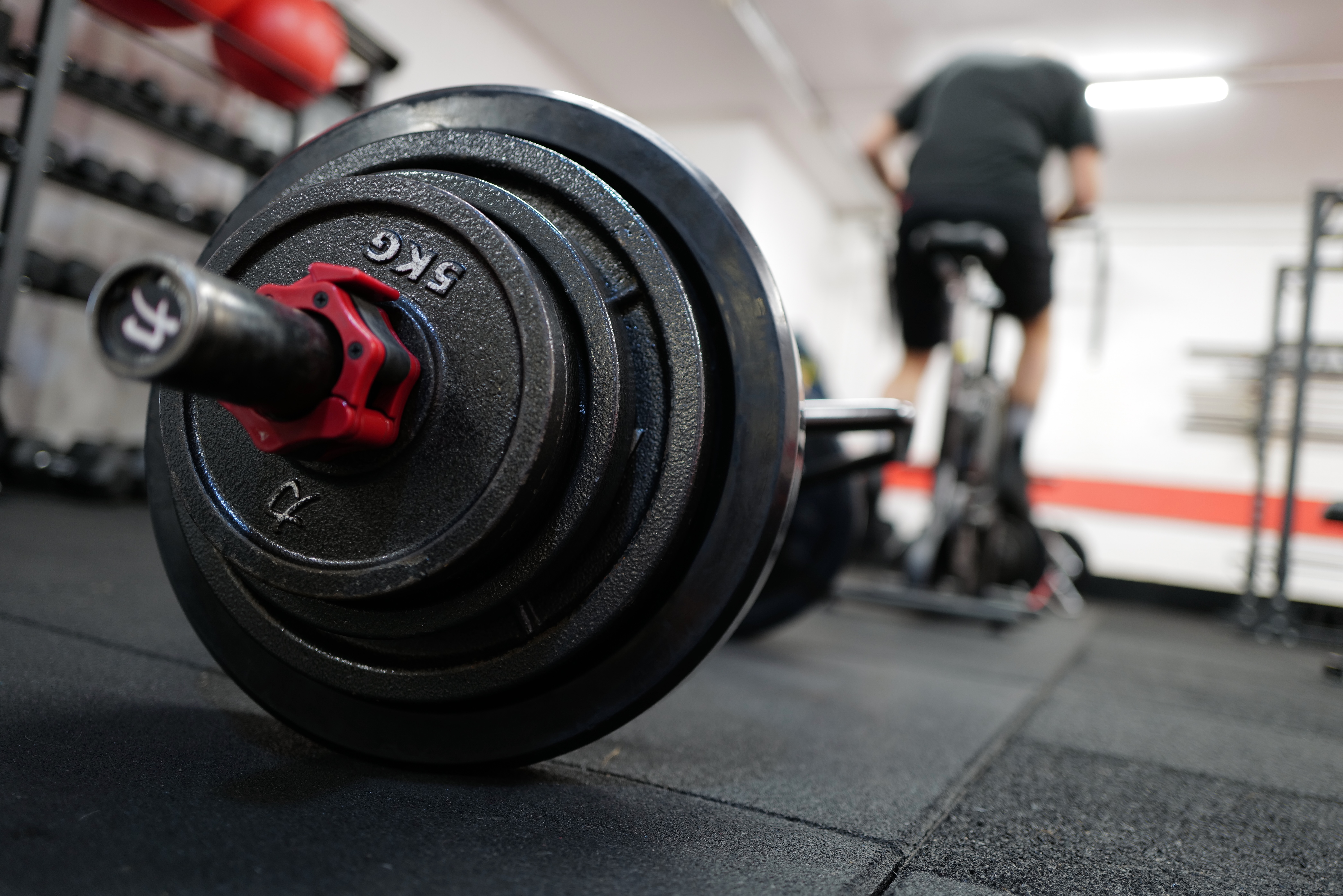
Get used to the gym, it is your friend
My physio clinic was Altius Healthcare, founded by Doug Jones who knows a lot about recovering mountain bikers. He helped two time world champion Gee Atherton get back onto the “Knife Edge” after a cataclysmic tumble in 2021. My PT was John at JW Fitness. Whilst not a cycling specific trainer, John has a passion for learning and soaked up Altius’ advice which created an envelope within which twice weekly sessions after and before my surgery could take place.
Tip 3: Pre-habilitation makes a huge difference
Getting my muscles in the best possible shape during the twelve weeks I had until surgery, would set me up for a faster recovery. The obvious pre-hab focus was on my glutes (medius and maximus), hip adductors / abductors, pectineus and piriformis as these muscles would be stretched or cut during the operation. At the same time, I would need to work on my psoas major which links the hip to the spine along with other core muscles to ensure that stability could be reclaimed.
Under John the PT’s guidance, I embarked on training centred around a variety of squats and dead lifts: trap bar, safety bar, single leg, Romanian, Bulgarian, split stance, heel elevated…I did them all. John is also a great believer in basic lifts and carry exercises which engage the whole body and promote core to leg engagement. There was little need for fancy exercise contraptions, this was prison yard style workouts with plenty of farmers’ carries and hoicking sandbags around.
The Surgery
As an engineer, the details of the prosthetic piqued my inner geek. My new hip would use advanced materials and the surgeon would have robotic-arm assistance to maximise accuracy. I was surprised to discover that I would be awake for surgery, albeit under spinal anaesthetic. The anaesthetist offered prosaic advice; “Bring noise-cancelling headphones” before adding the ominous, “no-one needs to hear the head of their femur being cut off!” The local anaesthetic approach meant that within hours of being subjected to the surgeon’s carpentry, I was out of bed on crutches and soon on my way home with a bag of meds and compression socks.
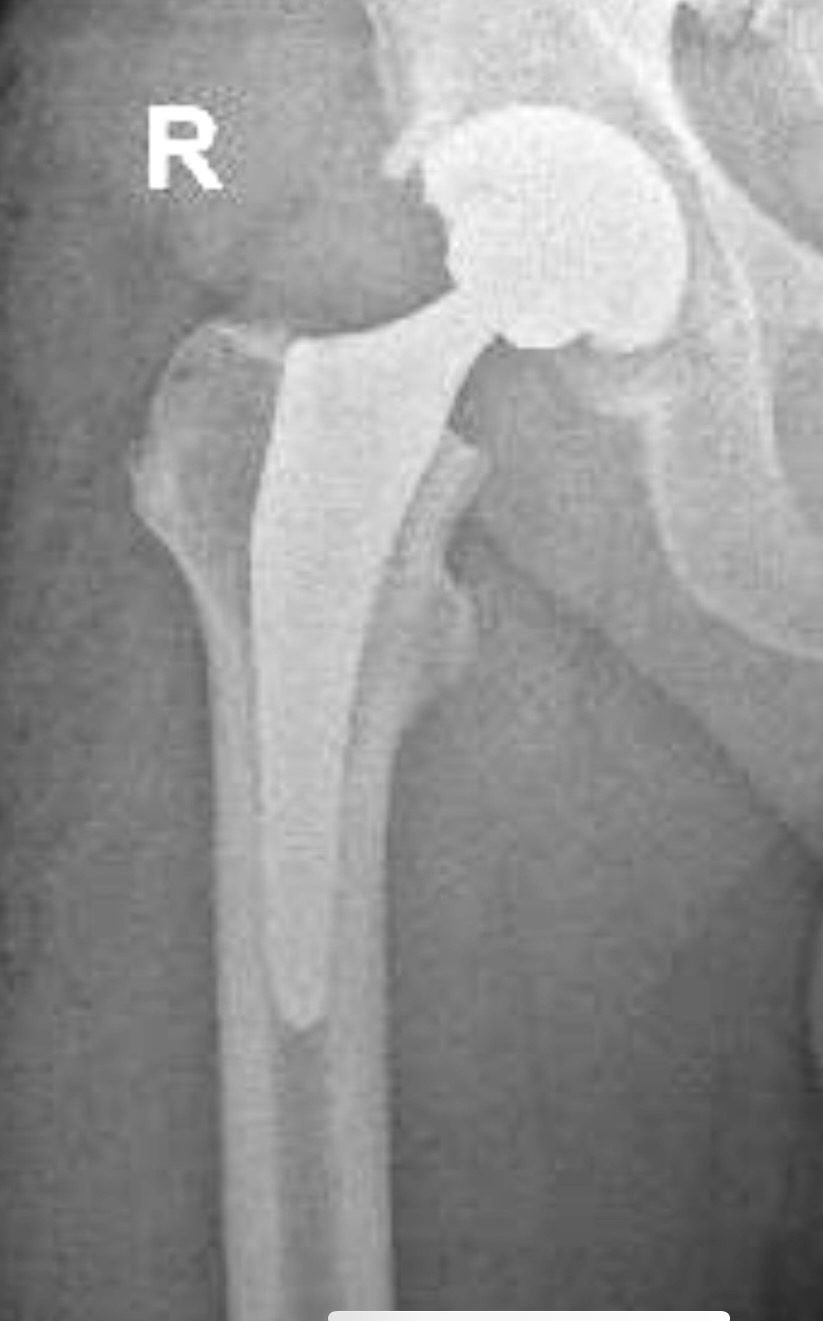
Tip 4: Every step in rehab is a step forward
Joint surgery necessarily inflicts deep tissue wounds that must heal before training can progress. Whilst I only had fourteen weeks from surgery to race, the first phase of recovery required a necessary period of near total rest. All I did during for the first two weeks was gentle mobility exercises and watch NetFlix.
Once the nine-inch scar across my backside started to heal, I could start physiotherapy proper. That was led by the team at Altius, but supplemented by my PT, John. Initially, the focus remained on mobility until I reached six weeks post-op. At that point, the partnership of physio and PT kicked up a notch, as I was cleared to start focussing on strength work.
With eight weeks left before the race, it was back to the squats and core exercises. Despite the pre-hab efforts, dislocation risk could not be eliminated, so full range squatting was out initially. Instead, the focus was on single leg partial squats, leg raises and variations on glute bridges using a range of techniques that focussed increasingly on specific muscle groups. Every time I believed that my new hip approached equality with its organic partner, John would modify the exercises to root out residual weaknesses. Getting race level performance from my leg would require every muscle to play its part, and I’d only know if things were working when I got back to pedalling.
Tip 5: Get back on a bike
Alongside the gym work and physio, despite not being allowed to cock my leg, I managed to get onto a turbo-trainer. Cleats were swapped for flats (to avoid twisting the hip) and I started spinning with zero load ten days after the operation.
Initially, power output barely hit triple digits but by nine weeks post-op it had doubled, then trebled. Most of the post-operative power loss isn’t muscles withering away, but the nervous system shutting down availability to protect muscles that have been exposed to trauma. Re-establishing the relationship between fibres and neurons, learning to move again, is essential to recovering power and the turbo fast tracked that reconnection.
By week ten, I was back on a mountain bike and immediately back at the physio, this time treating a damaged shoulder rotator cuff following a crash on my first ride out. But the new hip was fully intact, and I had established confidence in the robustness of my prosthetic.
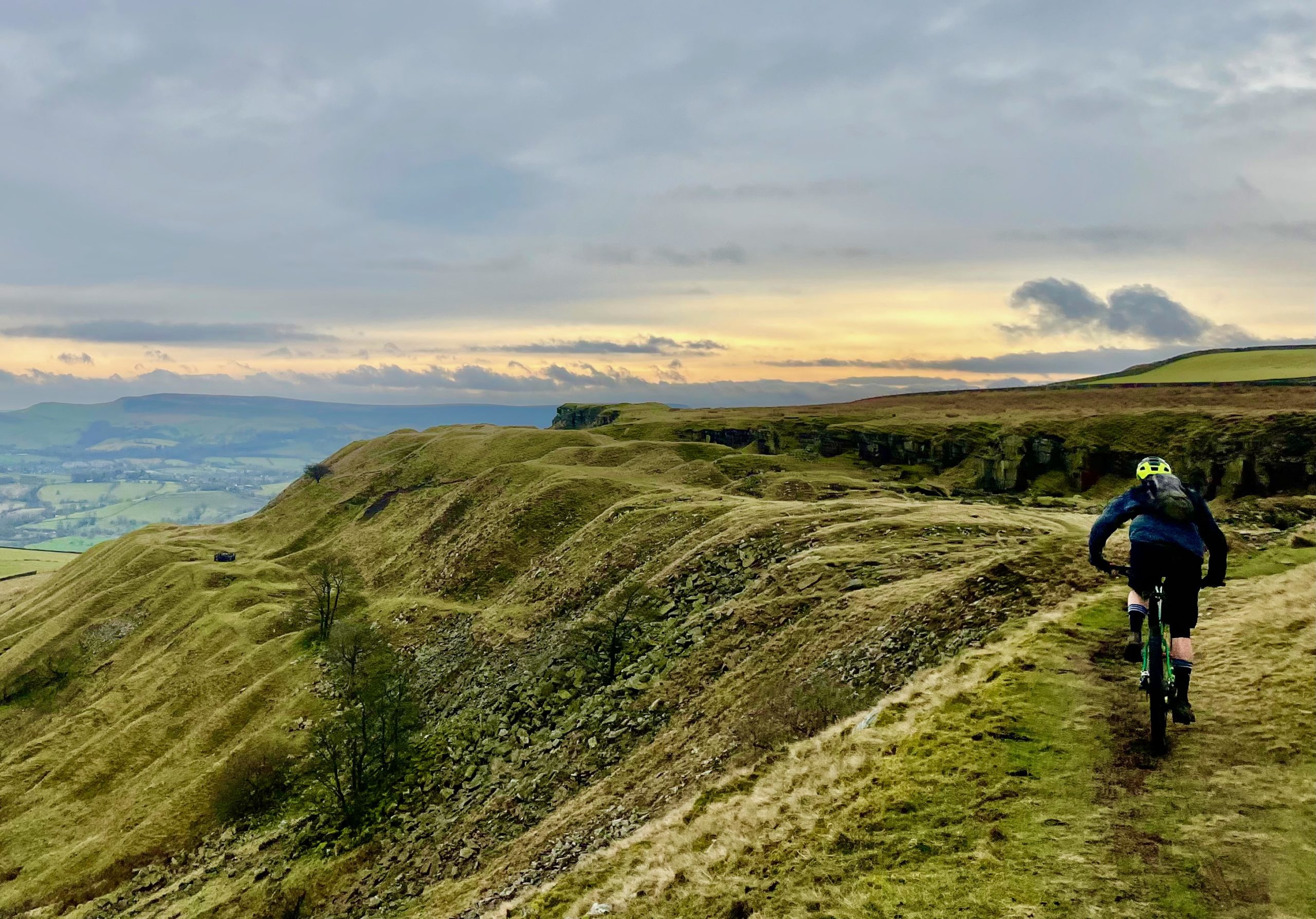
The Outcome
By picking the right team and following their advice before and after surgery, I got back on a bike without undue risk and by the time I returned to the surgeon’s clinic at twelve weeks, my power output was approaching pre-operation levels. I felt comfortable riding for extended durations over rough terrain, and this gave my surgeon confidence that I could race.
My performance at the 4Islands in 2022 wasn’t blistering, but I made it round and proved that the new hip was robust and fully functioning. Like many mountain bikers, I have a magpie’s eye for shiny new components, and when I think about my new hip, it stirs the same emotions as running my fingers over elegantly formed rear stays on a well-crafted frame or tuning in to the rhythmic murmur of a precision machined free-hub. But aside from my exotic parts upgrade, surgery gave me a kick up my scarred butt and awakened a renewed appreciation of fitness. I now value time in the gym as a compliment to riding and overall the surgery has made me a fitter, stronger, better rider. The 4Islands in 2023 will be a different race altogether…

4Islands final day start line, yachts, palms and sunshine!
Perhaps this piece has sparked your exploratory spirt and made you want to travel to one of these fantastic events. If it has, make sure to take out cycle specific travel insurance before going anywhere to ensure that you are fully covered against any mishaps. Yellow Jersey’s comprehensive cycle travel insurance will cover emergency medical expenses, trip cancellation, trip curtailment and trip abandonment whilst riding abroad. Ongoing medical conditions or any recent surgery can be covered – just call our free medical screening line when obtaining a quotation. If you want to cover your bicycle against damage whilst in the hands of the airline or whilst riding, Yellow Jersey offer a range of bicycle insurance policies to cater for your needs. If you need some assistance, just give our friendly support staff a call on 0333 003 0046.